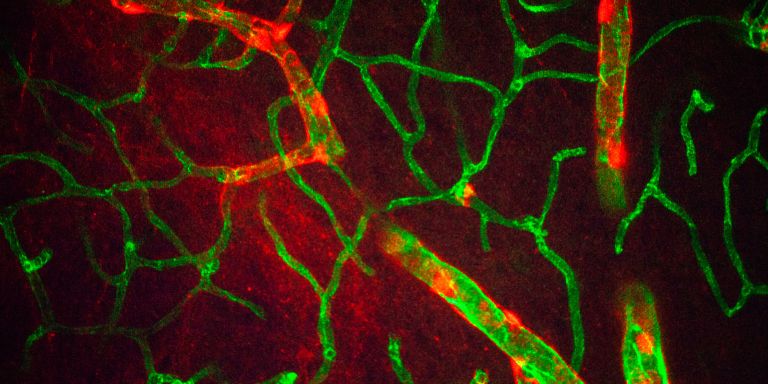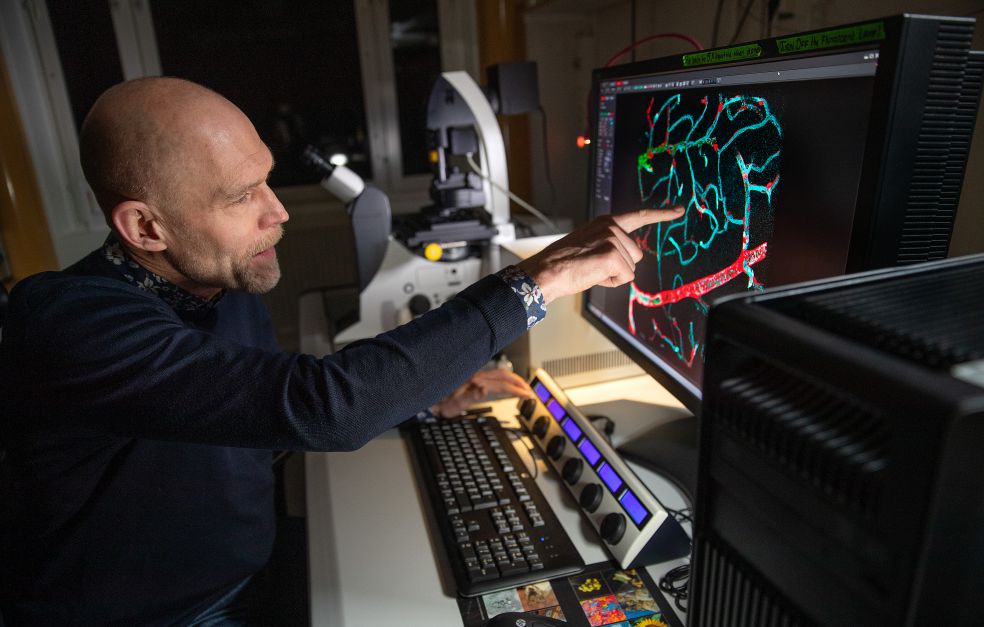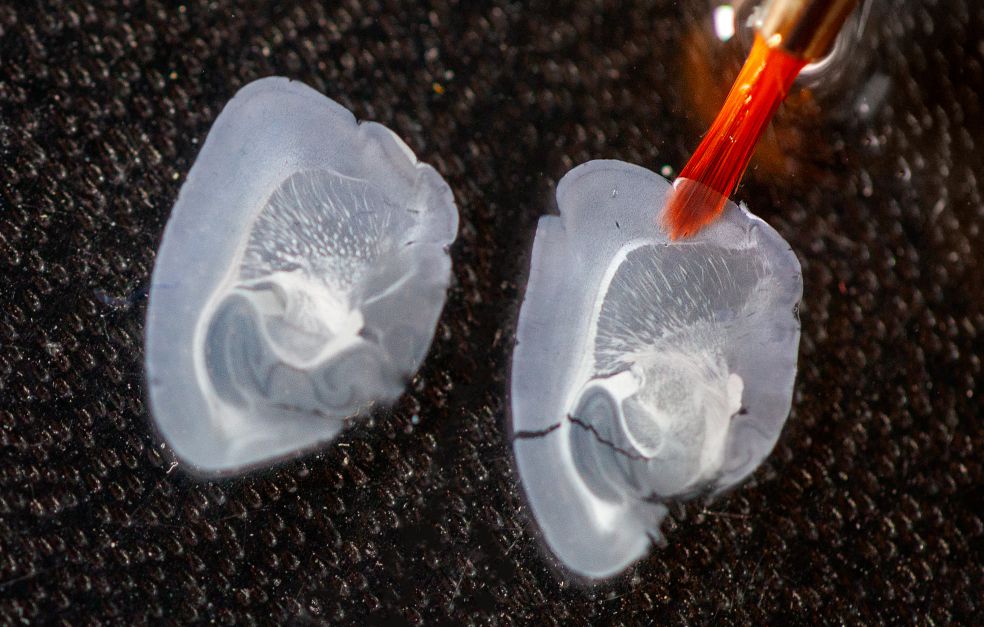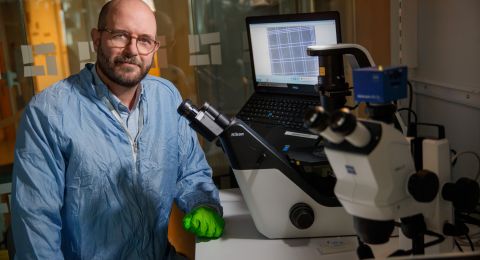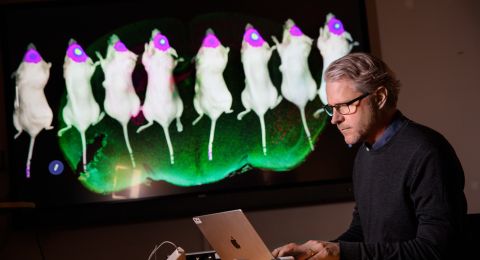In the olden days cartographers traveled the world to draw what they saw. Christer Betsholtz has instead followed the winding blood vessels of the brain to draw a map of the cells that make up those blood vessels. He is now expanding his research to enhance our understanding of the role played by blood vessels in a number of diseases.
Christer Betsholtz
Professor of Vascular Biology
Wallenberg Scholar
Institution:
Uppsala University
Research field:
Blood vessel biology, concentrating on blood vessel cell development and their function in conjunction with various diseases.
Betsholtz is a seasoned commuter. This is a necessity when you have to get to workplaces in three cities every week. His largest research team is based at the Rudbeck Laboratory in Uppsala, where they are focusing on functional and structural studies of blood vessels.
In 2018 the team published the first high-resolution molecular map of the cells of blood vessels in the brain and the blood-brain barrier. Similar maps did already exist, but none with as high resolution. They were therefore of less use.
“We have made our map easily accessible in the form of a database in which other people can search for the genes expressed in a given cell type in the blood vessels. It’s now used by researchers from all over the world,” says Betsholtz, who is professor of vascular biology.
Mapping blood vessels of the organs
The map is now to be expanded to include the blood vessel cells of the eye and the spinal cord, as well as the parts of the brain where spinal fluid is formed.
“The structure of those blood vessels is very different, since they gather in tiny clusters that filter the blood and produce spinal fluid.”
In parallel, Betsholtz is working on creating similar maps of blood vessel cells in the liver, heart and lungs. And his mapping efforts don’t stop there. An unexpected discovery when he was making the first map was the presence of cells of connective tissue, known as fibroblasts, round the blood vessels in the brain.
“We came upon them by chance. We know that most of the body’s organ are embedded in fibroblasts, but that’s about all we do know about them. And no one had thought that they were present in the brain. So we’ve now decided to launch a concerted initiative, and make a map of all fibroblasts in the body’s organs,” says Betsholtz.
Integrating industry with academia
Betsholtz’s second research team is just over an hour away by train from Uppsala. He is Director of Integrated Cardio Metabolic Centre (ICMC), which lies in Flemingsberg, Huddinge, south of Stockholm. ICMC is a collaboration between industry and the academic world, in which scientists from AstraZeneca are working alongside research teams from Karolinska Institutet. The project focuses on cardiovascular diseases, diabetes and kidney disease in the grey zone between basic and applied research.
“The unique feature of this project is that we have physically integrated the academic world with industry in an academic environment. Industrial research has traditionally taken place behind closed doors. ICMC was created as an experiment to see what advantages could be achieved by sharing our knowledge,” he says.
Seven years on, ICMC has made progress in several areas. Not least, Betsholtz considers that it has given real impetus to his own research:
“ICMC gives me additional resources and better access to the platform for single-cell RNA sequencing. It’s an extremely powerful tool, which generates the mass of information that is the key to the progress we are currently making.”
On the trail of individual cells
The molecular map of blood vessel cells is created in multiple steps. The first stage is to ascertain which genes are expressed in a selected cell type with the help of single-cell RNA sequencing. When gene expression has been determined, the next step is to find out where in the body that particular cell type is found.
The cells are tracked using antibodies, among other things, and the result can be transposed onto an anatomical map showing where in the body that specific cell type can be found.
Yet the method puts the very definition of a cell type to the test. Betsholtz explains:
“The cells covering the inside of blood vessels – endothelial cells – exist in a number of variants, all depending on whether they are located in a blood vessel in the brain, the lungs or a bone. And individual cells differ from each other at different stages of their growth.”
All cell stages can be studied at the same time, which makes the material on which the maps are based extremely complex. Large quantities of data still remain to be processed and analyzed.
“Right now we’re able to generate this incredible volume of information, but we have a long way to go before we understand it.”
Successful environments
Betsholtz has built the research environment at the Rudbeck Laboratory with two other Wallenberg Scholars: Lena Claesson-Welsh and Taija Mäkinen. And they have now been joined by a number of world-leading research teams.
He thinks the key to establishing a successful research environment is to ensure there is a combination of thematics and personal chemistry.
“We now have an environment in which people from different research teams are making progress together. But it’s based on generous basic funding, which gives us the freedom to commit to new projects and collaborations. That freedom must exist at all levels,” he says.
“The Scholar grant enabled me to create a bridge between different funding periods. The best thing is the freedom I have. I’m not tied to a specific program – I can research with curiosity as my main driver.”
When the photo session is over Betsholtz hurries off to catch a train. His destination is AstraZeneca’s research facility in Gothenburg, which is his third workplace. Despite the distance, he seldom flies.
“On the train you can lean back and work undisturbed for three hours, reading and writing. It’s quite simply much better than flying.”
Text Magnus Trogen Pahlén
Translation Maxwell Arding
Photo Magnus Bergström

